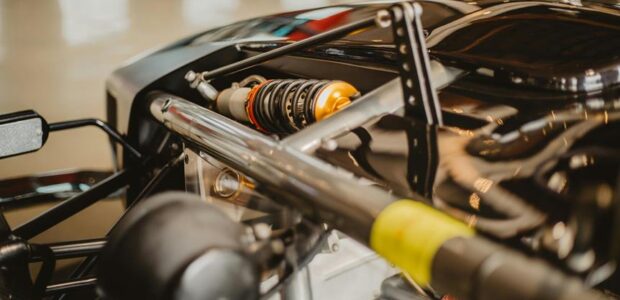
A control arm on a car is an essential part of the suspension system that maintains stability and proper wheel alignment. It plays a key role in connecting the steering knuckle to the frame, ensuring synchronized movement of the chassis and wheels. Typically made of stamped steel, cast iron, or cast aluminum, control arms come in various shapes like A-shaped, L-shaped, or wishbone-shaped. If you want to understand more about the importance of control arms, their signs of damage, and how to maintain and replace them effectively, you'll discover valuable information by exploring further. Another crucial component related to control arms is the lifter in a car, which is responsible for maintaining proper valve clearance and ensuring smooth engine operation. Just like control arms, lifters play a significant role in the overall performance and functionality of a vehicle. By familiarizing yourself with the functions and maintenance of these critical parts, you can ensure the safety and efficiency of your car for years to come.
Importance of Control Arms
The control arms on a car play an essential role in maintaining stability and ensuring proper alignment between the chassis and wheels. These vital components are integral to the suspension system, located on the front axle of road-going vehicles. Typically made of stamped steel, cast iron, or cast aluminum, control arms come in various shapes such as A-shaped, L-shaped, or wishbone-shaped. They serve to connect the steering knuckle to the frame, allowing the chassis and wheels to move in unison.
Signs of Control Arm Damage
To identify potential control arm damage, watch out for specific signs that indicate issues with these vital components of your vehicle's suspension system.
Look for symptoms such as vibrations felt in the steering wheel or chassis, which could indicate worn-out bushings or ball joints.
Misalignment, where the vehicle doesn't steer straight or the steering wheel is off-center, might signal control arm damage.
Additionally, listen for clunking or knocking noises when driving over bumps or making turns, as this could point to a problem with the control arms.
If you notice any of these signs, it's important to have a mechanic inspect the control arms for potential damage and consider replacement to maintain the safety and performance of your vehicle.
Control Arm Replacement and Maintenance
For effective control arm replacement and maintenance, understanding the pivotal role these components play in your vehicle's suspension system is essential. When replacing control arms, ensure proper alignment to maintain handling and tire wear.
Inspect for damaged bushings, ball joints, or frame connections. Regularly lubricate moving parts to prevent premature wear. Follow manufacturer specifications for torque settings during installation.
Check control arm bolts for tightness periodically. Listen for unusual noises or feel for vibrations indicating potential issues. Have a professional mechanic assess any damage promptly to avoid safety hazards.
Frequently Asked Questions
Can Control Arm Damage Affect Other Parts of the Suspension System?
Yes, control arm damage can impact other suspension parts. When compromised, it affects wheel alignment, handling, and stability. Seek professional inspection to prevent further issues. Addressing control arm damage promptly preserves overall suspension integrity and driving safety.
How Often Should Control Arm Bushings Be Inspected for Wear?
Inspect control arm bushings annually for wear. Look for signs like cracking, sagging, or excessive movement. Regular checks prevent premature failure, ensuring peak suspension performance. Consult a mechanic if issues arise for timely replacement and safe driving.
Are Aftermarket Control Arms as Reliable as OEM Parts?
Aftermarket control arms vary in quality but can be as reliable as OEM parts if sourced from reputable brands. Consider factors like material, construction, and reviews. Confirm proper fitment and alignment for peak performance.
Can Control Arm Damage Lead to Tire Wear or Uneven Tire Tread?
Control arm damage can lead to tire wear or uneven tread due to misalignment issues. Vibrations, noises, and poor handling are signs of damage. Regular maintenance and prompt replacements are essential for safe driving.
Is It Necessary to Replace Both Control Arms if One Is Damaged?
If one control arm is damaged, it's recommended to replace both for balanced performance. Uneven wear may result if only one is replaced. Guarantee proper suspension alignment and stability. Consult a mechanic for accurate evaluation and replacement.
